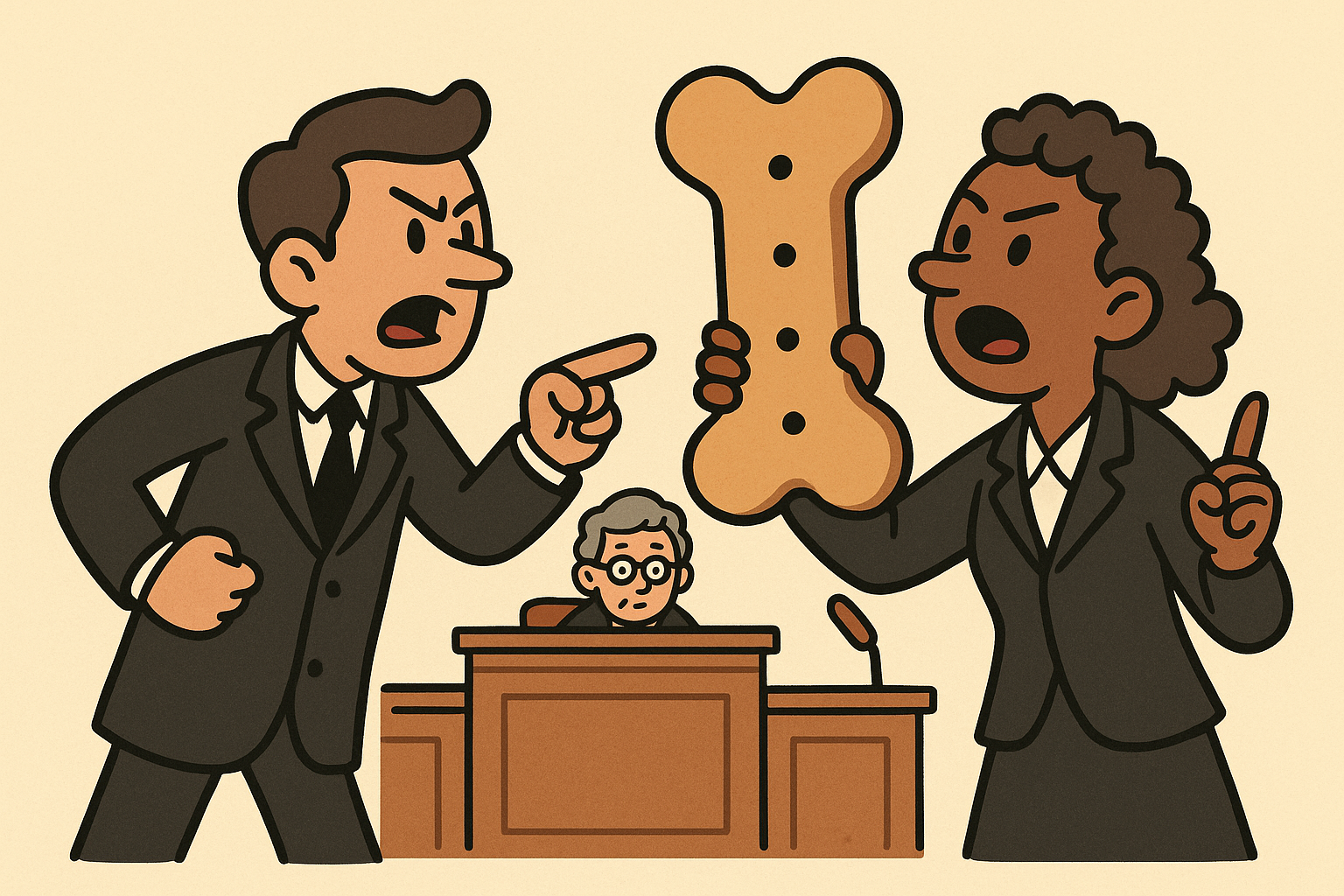
Free to Create, Free to Discriminate? Inside the 303 Creative Ruling Shaking Constitutional Law
On the last day of the Supreme Court’s 2023 term, a controversy over a wedding website that didn’t even exist set a pivotal precedent. In
In the realm of Labor & Employment law, where complex relationships between employers and employees are constantly evolving, case studies are vital tools for learning, refining strategies, and predicting the outcomes of future cases. These case studies go beyond mere legal precedents—they provide critical, real-world examples of how specific legal issues have been addressed in the past. For labor lawyers, human resources professionals, and legal departments, understanding these case studies can help to not only avoid costly legal pitfalls but also optimize strategies for navigating the ever-changing landscape of employment regulations.
At The One Law Firm, we understand the challenges that Labor & Employment law professionals face in staying ahead of new policies, rulings, and regulatory changes. This article will explore the importance of case studies in Labor & Employment law, how reviewing these cases can help you make better decisions, and why our blog community can be a valuable resource in your pursuit of best practices.
Labor & Employment law governs the intricate relationship between employers and employees. It encompasses everything from wage and hour disputes to discrimination claims and union negotiations. For lawyers, case studies offer the opportunity to learn from others’ experiences, identify effective strategies, and avoid costly mistakes.
Why Case Studies Matter in Labor & Employment Law
Navigating Complex Legal Landscape
Labor & Employment law often involves navigating a complex mix of federal, state, and local regulations. This labyrinth of rules can make it difficult to understand the full scope of a particular issue. By reviewing case studies, legal professionals can gain a clearer understanding of how courts have interpreted specific regulations and how agencies have enforced labor laws.
Example: The landmark Epic Systems Corp. v. Lewis case, which addressed arbitration agreements in employment contracts, is a case every employment lawyer needs to understand. A deep dive into this case provides valuable insights into how the U.S. Supreme Court approaches the enforcement of arbitration agreements in labor disputes. Understanding its impact can better prepare attorneys for similar cases moving forward.
Understanding Legal Precedents and Trends
Labor & Employment law is heavily influenced by past decisions and evolving interpretations of federal and state statutes. Case studies allow professionals to track legal precedents and recognize emerging trends. By reviewing case studies, lawyers can better predict how the courts might rule in future employment-related disputes, making them more proactive in addressing their clients’ concerns.
Quote: “Case studies are not just about learning from the past—they are about understanding the legal trends that will shape the future of Labor & Employment law.” — Caroline Harris, Employment Law Expert and Author.
Effective Client Representation
Clients involved in employment disputes often seek a lawyer who can provide practical solutions based on real-world experiences. By reviewing case studies, attorneys can present clients with well-reasoned arguments supported by examples of how similar situations have been handled. This enhances the lawyer-client relationship, improves the chances of a favorable outcome, and builds trust.
Example: In Vance v. Ball State University, the Supreme Court addressed the scope of an employer’s liability under Title VII of the Civil Rights Act. The case study helps practitioners understand how employers’ liability is shaped by the hierarchical structure of the workplace, particularly when the question of “supervisor” status is in dispute.
The benefits of reviewing case studies extend beyond just understanding legal theory—they play an essential role in improving decision-making for lawyers handling Labor & Employment cases. By analyzing past cases, practitioners can make more informed, strategic decisions for their clients.
Identifying Key Legal Issues
Every Labor & Employment case brings with it a set of unique legal issues. Case studies allow lawyers to identify common challenges and uncover recurring patterns in legal decisions. By understanding these issues, attorneys can better advise their clients on the best approach to a specific problem.
Building Stronger Arguments
Effective advocacy is central to successful Labor & Employment law practice. Lawyers who study case studies are better equipped to build stronger arguments, anticipating the needs and expectations of courts or regulatory bodies. By understanding the arguments used in successful cases, lawyers can apply those same strategies to their own cases.
Quote: “Every case study has a lesson. Whether it’s learning how to frame an argument effectively or recognizing what not to do, these cases offer invaluable tools for any employment lawyer.” — Andrew Williams, Partner at Williams & Johnson LLP, specializing in Labor & Employment law.
Predicting the Outcome of Future Cases
A key benefit of case studies is that they allow legal professionals to predict the potential outcome of similar cases. While no two cases are identical, understanding the key factors that led to a successful or unfavorable decision in a past case can help lawyers anticipate how a current case may be resolved.
Example: Reviewing National Labor Relations Board v. Noel Canning, where the Court ruled on the validity of President Obama’s recess appointments, can help lawyers better understand executive powers in labor disputes, especially regarding the NLRB’s jurisdiction and authority.
To maximize the value of case studies, lawyers should incorporate certain best practices when using them as learning tools.
Contextualize the Case
Understanding the full context of a case is critical to making the most of a case study. Lawyers should not only focus on the court’s decision but also analyze the facts, circumstances, and regulatory frameworks at play. The legal reasoning, the role of evidence, and the political climate surrounding the case can all contribute to how the case was decided.
Focus on Strategy and Tactics
Case studies are powerful because they allow you to examine the strategies and tactics that led to a successful (or unsuccessful) outcome. By focusing on the specific steps taken by the legal teams, lawyers can uncover effective strategies for resolving disputes in the workplace.
Example: A case study of Bostock v. Clayton County can help lawyers understand how Title VII protections against discrimination on the basis of sexual orientation were applied in the workplace. This case serves as a key example of how progressive social and legal shifts are reflected in workplace policies and employment law litigation.
Collaborate and Discuss
Sharing case studies with colleagues and peers in the legal community can provide additional insights. Engaging in discussions about the tactics and strategies employed in a particular case can lead to new approaches that might not have been considered otherwise.
At The One Law Firm, we aim to create a collaborative platform where legal professionals specializing in Labor & Employment law can come together to learn from each other, share case studies, and refine their practice. Here’s how our blog community will benefit you:
Case Study Reviews
Each post on our blog will delve deep into real-world Labor & Employment case studies, examining the key issues, outcomes, and strategies that shaped the case. Through these reviews, you’ll gain valuable insights that can help you improve your practice and better serve your clients.
Best Practices and Expert Insights
Our blog will feature contributions from legal professionals with years of experience in Labor & Employment law. These expert insights will focus on best practices, successful strategies, and lessons learned from their own cases.
Collaborative Knowledge Sharing
One of the greatest advantages of participating in our blog community is the opportunity to share your own experiences and case studies. By contributing, you can help others in the legal community learn from your experiences while gaining fresh perspectives on the challenges you face in your practice.
The value of case studies in Labor & Employment law cannot be overstated. By contributing to our blog, you’ll not only enhance your own practice but also help others in the legal community avoid mistakes, optimize strategies, and navigate complex regulatory challenges. Whether you’re submitting your own case studies or offering commentary on others, your participation will make a meaningful impact on the broader legal community.
Case studies provide a powerful tool for understanding and navigating the complexities of Labor & Employment law. By regularly reviewing case studies, lawyers can refine their strategies, avoid common pitfalls, and provide better representation for their clients. At The One Law Firm, we’re building a community where knowledge is freely shared, and we invite you to be part of it. Join us today, contribute your insights, and help us create a more informed, collaborative, and effective legal community.
Endnotes
Caroline Harris, Employment Law Expert and Author, The Role of Case Studies in Employment Law.
Andrew Williams, Partner at Williams & Johnson LLP, specializing in Labor & Employment law, Refining Legal Strategies in Labor & Employment.

On the last day of the Supreme Court’s 2023 term, a controversy over a wedding website that didn’t even exist set a pivotal precedent. In

How a pet‑food lawsuit became the Supreme Court’s cleanest answer yet to a messy removal problem—and what it means for every litigator who plays the

How a herring boat fight rewired U.S. administrative law—and what it means for agencies, regulated industries, and your litigation strategy. On a Friday morning at

How an unpublished Massachusetts opinion is quietly rewriting the rules of fiduciary warfare—and what every planner, litigator, and trustee should learn from the fallout. The

By TheOneLawFirm.com **“The express purpose of [§ 208(9)(o)] was to eliminate tax loopholes concerning royalty payments.” — Judge Cannataro, *Matter of Walt Disney Co.*¹ Long before Disney+ ever streamed a pixel in

How Adolph v. Uber Re‑wired California’s “Sue‑Your‑Boss” Law—and Why Labor Lawyers Everywhere Should Care By TheOneLawFirm.com “An order compelling arbitration of the individual claims does





